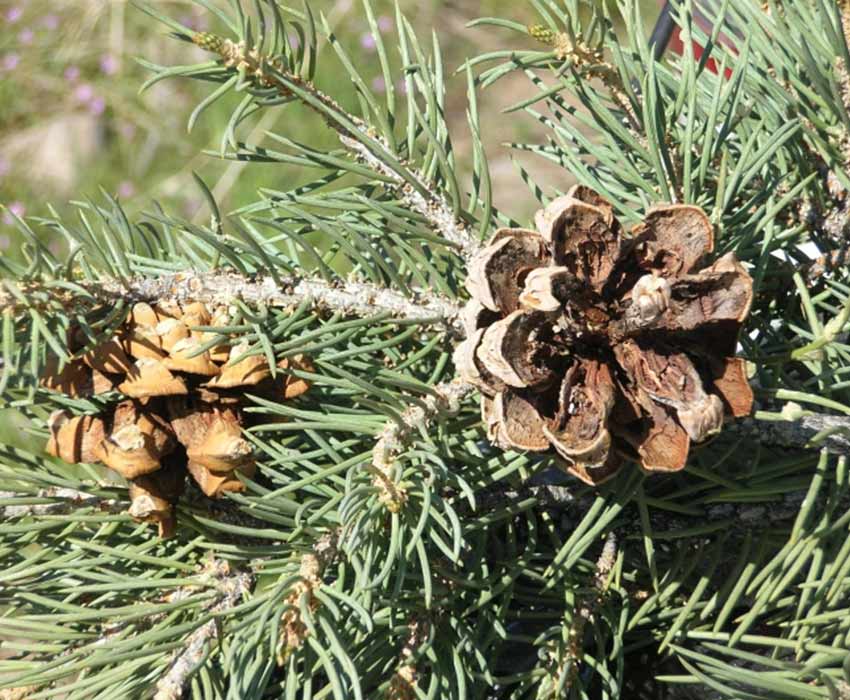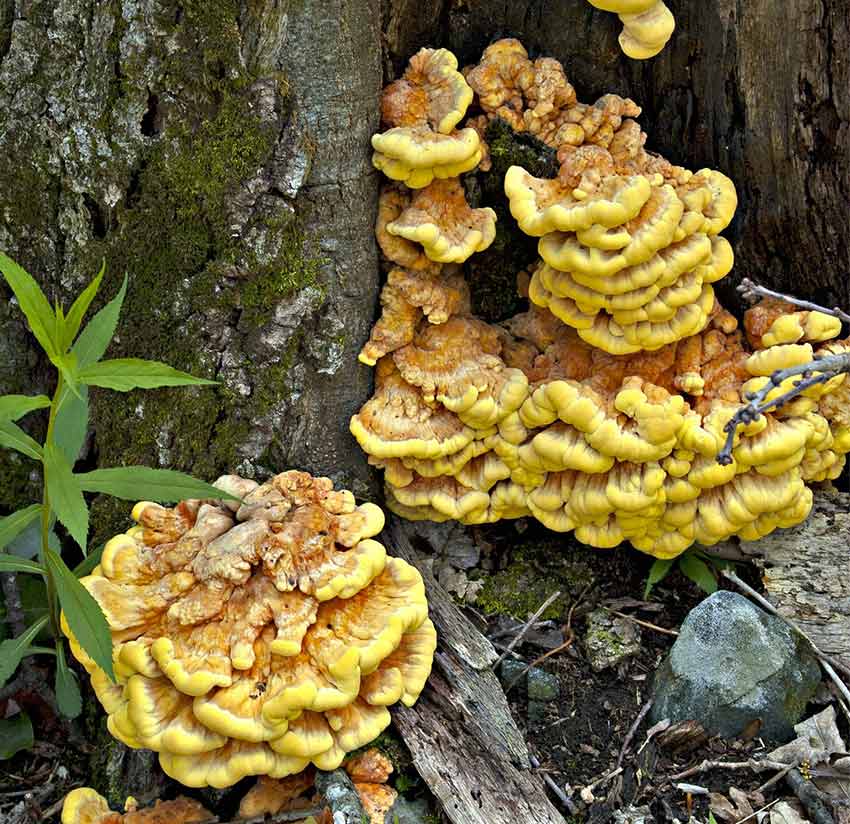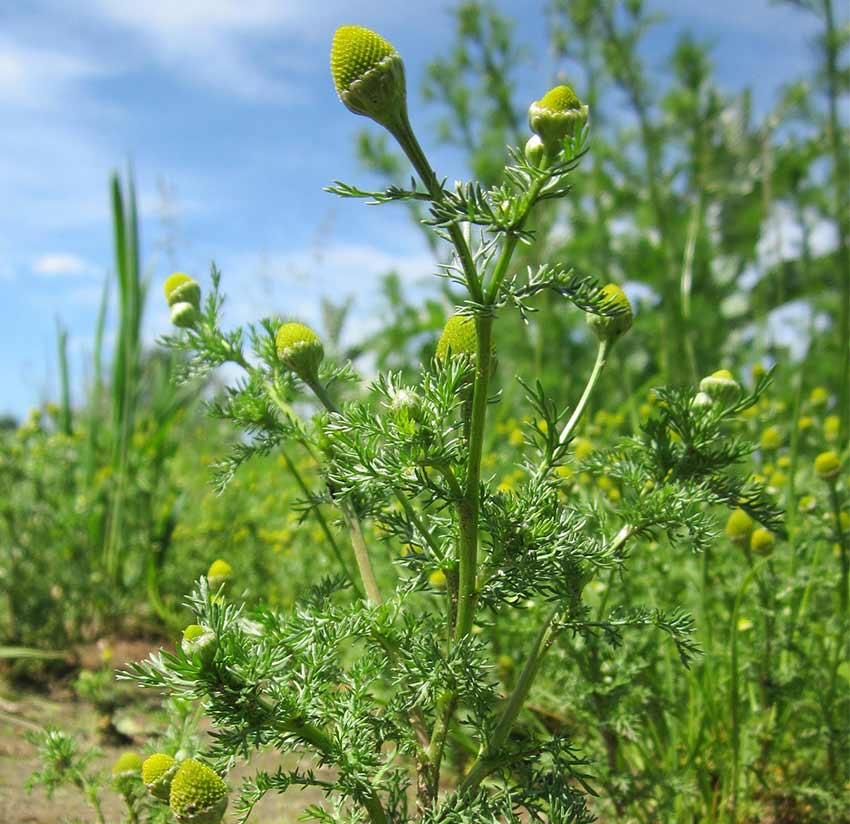By Dorothy Hastings, American Forests
If you are ever stranded in the wilderness of the U.S., unsure which direction is the nearest grocery store or restaurant, fear not. The forest is your supermarket, and it is time to go shopping! Below is a list of six edible plants (and fungi) found in different parts of the U.S.
Chicory

Habitat: Open fields or along roadsides and concrete.
Season: Summer
Some may be put off by the bitter taste of this blue beauty, but there is more than one way to enjoy this wild treat! The raw leaves of the chicory plant can be eaten in a sandwich or salad. Some people enjoy boiling or braising the leaves to get rid of the bitter taste. The roots of the chicory flower can even be used as a coffee substitute. To do this, cut off the ends of the roots, cook them until they turn brown, grind them and brew them like coffee grinds. Chicory leaves and roots are rich in vitamins and a great source of fiber. They also treat cuts, relieve anxiety, and boost the immune system.
Pinyon Pine

Habitat: Semi-arid regions in the southwestern U.S.
Season: Late-August through October, every four to seven years
If you find yourself stranded in a forest around lunch time, you might be pining for a snack! You can head to the nearest pine tree to get a three-course meal from its seeds, needles and bark (all pine tree seeds are edible, but not all pine trees are). If you’re looking for an especially tasty treat, try the pine seeds of the pinyon pine. Many southwestern Native American tribes have been eating these nutrient-rich nuts for thousands of years. The seeds are easiest to extract when the pine cones are dry, brown and open. Once shelled, they can be eaten raw, roasted or chopped, and made into cookies, soup or even pine nut liquor. Next, try the pinyon’s inner bark, which you can bake, fry or boil. To finish off your forest feast, gather up the pine needles and boil them into a refreshing and medicinal tea high in vitamin C!
Chicken of the Woods

Habitat: Eastern and northern U.S. forests
Season: Late-summer and fall
Eating a wild mushroom is something many are not comfortable trying, but this mushroom is easy to identify, full of protein and vitamins, and tastes like chicken! The two species, known as Laetiporus sulphureus (yellow-pored) and Laetiporus cincinnatus (white-pored), look like large bright-orange shelves growing at the base of many oak and other hardwood trees. The younger, more colorful ones are soft and savory, but always make sure to try a small amount determine if you are allergic. Avoid ones growing on conifers, eucalyptus and cedar trees, as they will make you sick. This mushroom is a great meat alternative to fry, bake or sauté. Try throwing some in an omelette or making chicken of the woods fried rice.
Cattail

Location: Wetlands
Season: Year round
If you find yourself stuck in a wetland area, this survival food may save you. Although it may look like a hairy hot dog, it sure doesn’t taste like one! Once the cattail has been pulled up from the root, peel back the outer layer and eat the white base of the stalk and lower leaves, or enjoy the roots known as the “rhizomes.” Although all parts are edible raw, they can taste bland or even bitter, so many prefer to boil or fry them. You can also use crushed roots or the yellow pollen of the cattail as nutritious flour for bread or cake!
Pickleweed

Habitat: Coastal salt marshes
Season: Summer
These savory succulents are best enjoyed in the summer months when they are green, firm and ready for munching. Pickleweed, scientifically known as Salicornia, but sometimes called sea beans, has a salty crunch similar with that of a pickle when eaten raw. If you want to have some flavorful fun, steam or cook them with your favorite catch of the day!
Pineapple-weed

Habitat: Along roads or concrete.
Season: Summer
This fragrant weed is great for hikers who are looking for an energizing snack, but I prefer to make it into a sweet tea! Chop up the dried cone-shaped flower heads and steep them in boiling water to brew a chamomile-like tea. The plant can also be used to treat a variety of issues like stress, pain, insomnia and indigestion.
Authors note: Please make sure you are not damaging plants or surrounding habitat when you are trying these wild treats! Also, do not eat anything in the wild unless you have positively identified it and can safely consume.